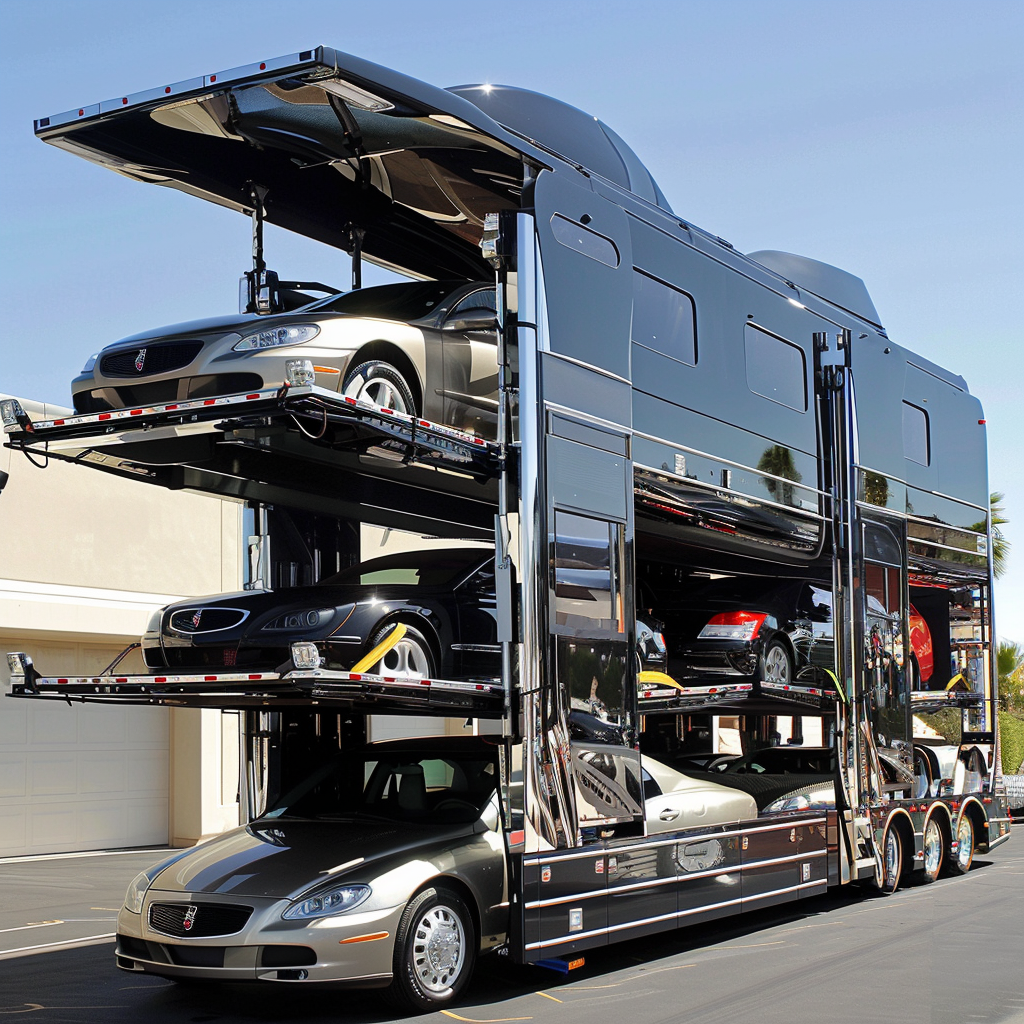What sets open car shipping apart from enclosed car shipping?
An excellent strategy to alleviate the stress of an upcoming family move or job relocation is to arrange for the shipping of your car—especially if you own additional vehicles, classic cars, or are facing a considerable distance to travel.
When it comes to shipping your vehicle, you have several options to consider. Take a moment to explore our guide, which elucidates the distinction between open and enclosed car shipping, empowering you to make an informed decision.
What constitutes an open auto transport carrier?
An open auto transport carrier earns its name due to its exposure to the elements. These carriers are a common sight on highways and at auto dealership lots, typically accommodating up to 10 vehicles on two tiers.

Most open car carriers carry a minimum insurance coverage of $100,000. However, as they are susceptible to weather conditions such as rain, snow, hail, and airborne debris, there is a higher likelihood of minor damage to vehicles during transit.
Despite this, many car manufacturers opt for open carriers to transport their new inventory due to their overall safety record. Instances of damage are rare, and when they occur, they are typically minor and covered by insurance.
Advantages of open car carrier transport include its affordability, improved visibility for drivers to inspect vehicles during transit, and its lighter weight and reduced fuel consumption, which is more environmentally friendly.
However, there are also drawbacks to consider, such as exposure to the elements and less security compared to fully
What characterizes an enclosed auto transport carrier?
You might not easily spot these transports on the highway as the vehicles they transport are concealed from view—they resemble standard semi-trucks but are slightly wider. Enclosed carriers typically have a capacity of 2 to 7 vehicles at a time.
Most enclosed carriers provide insurance coverage ranging from a minimum of $250,000 to up to $1 million in some instances.

Additional advantages of enclosed carrier transport include faster transit times due to fewer stops, higher insurance coverage per vehicle compared to open transport, and the availability of non-stack carriers for added safety measures.
The primary advantage of enclosed carriers is their protective enclosure. Vehicles are shielded from all weather elements, ensuring they arrive at their destination in the same pristine condition as when they departed. This makes enclosed carriers the preferred choice for transporting classic cars, antiques, or luxury and high-value sports cars, where the utmost safety is paramount.
However, this added protection comes at a cost. Enclosed carrier transport typically commands a 33% higher price than open carriers, ranging from $300 to $500 more per transport, depending on various factors.enclosed trailers.
